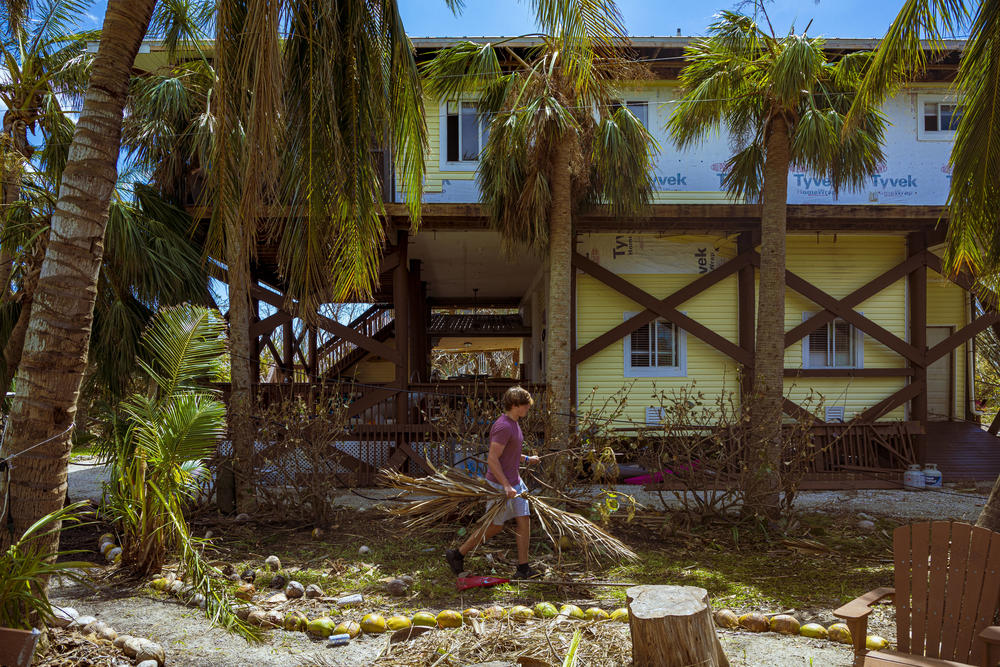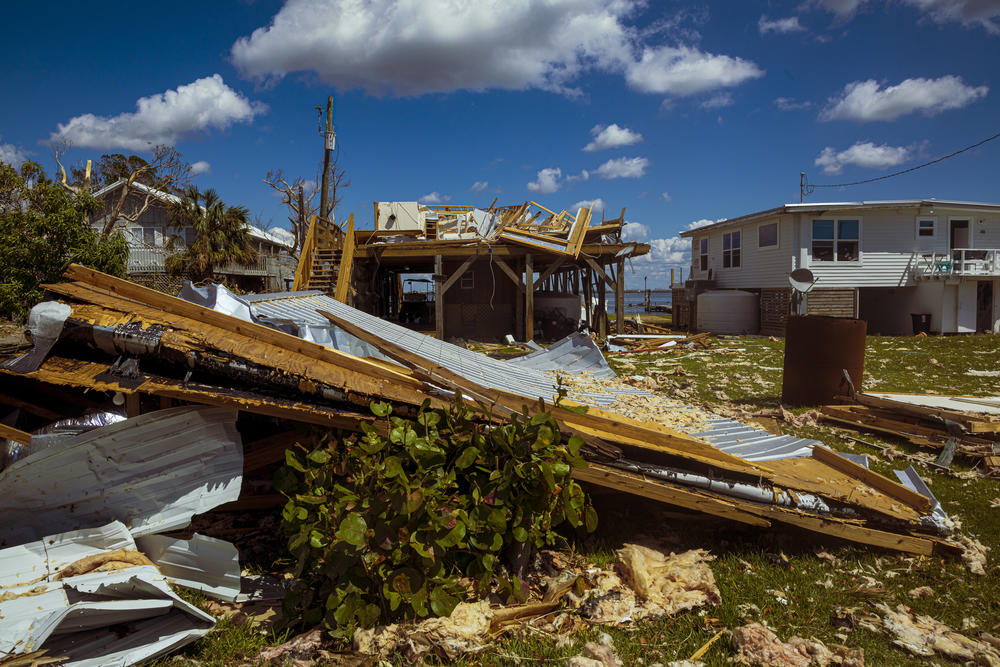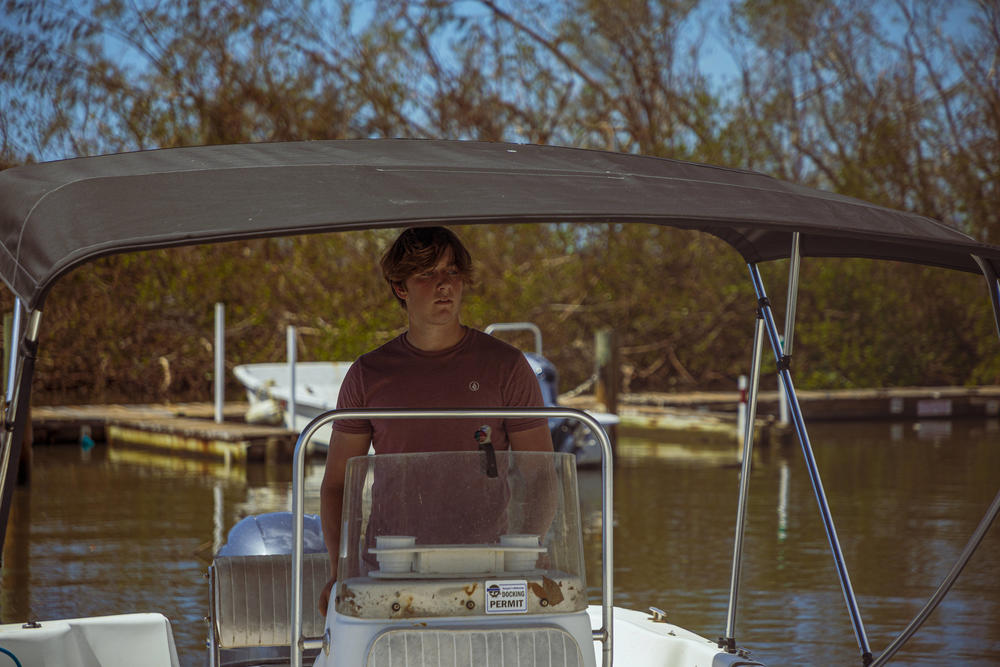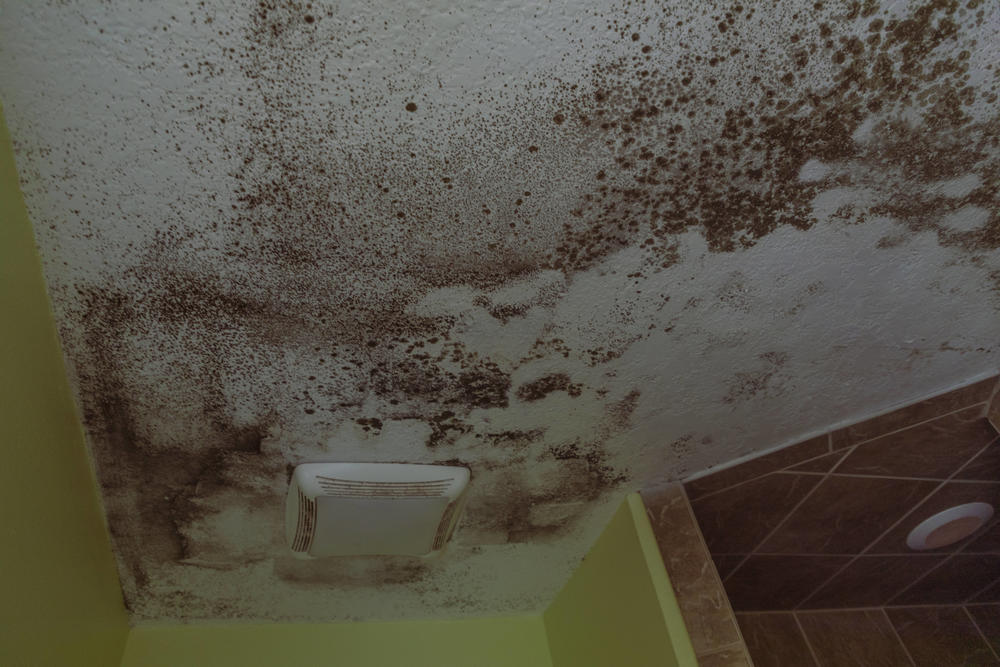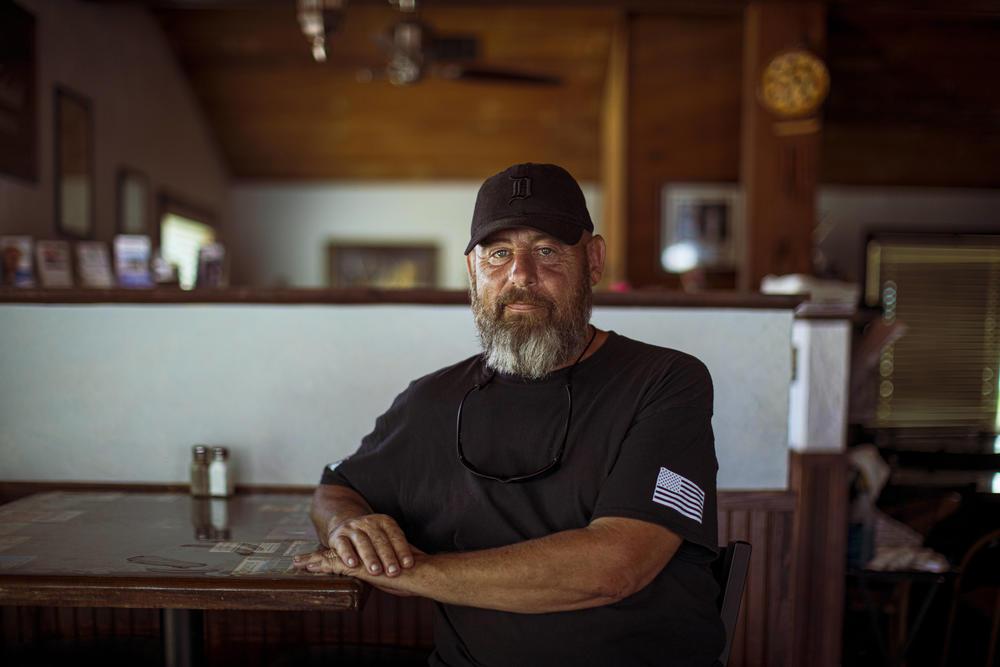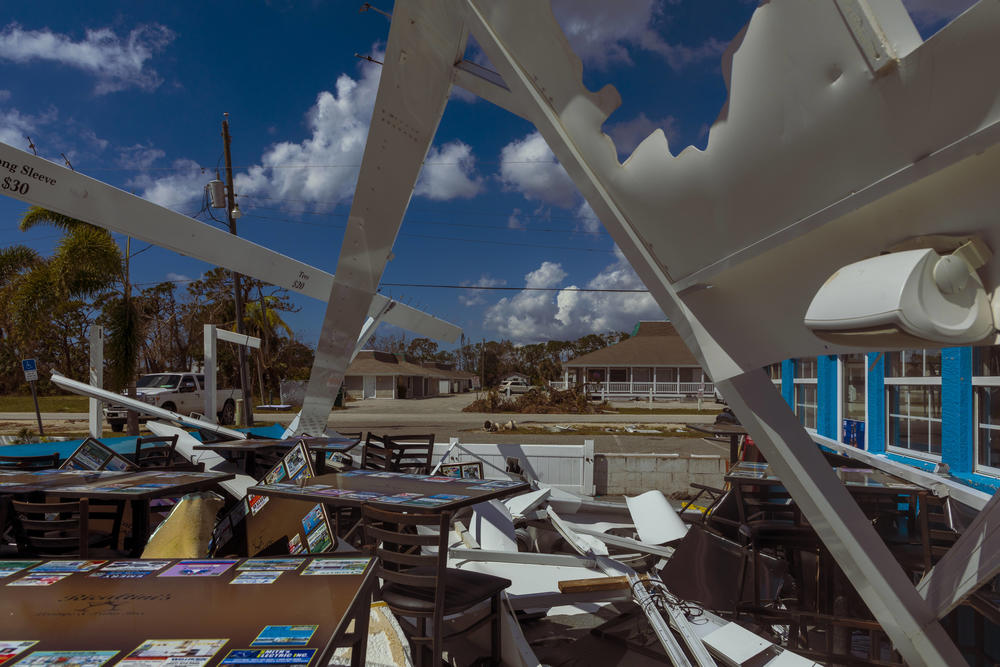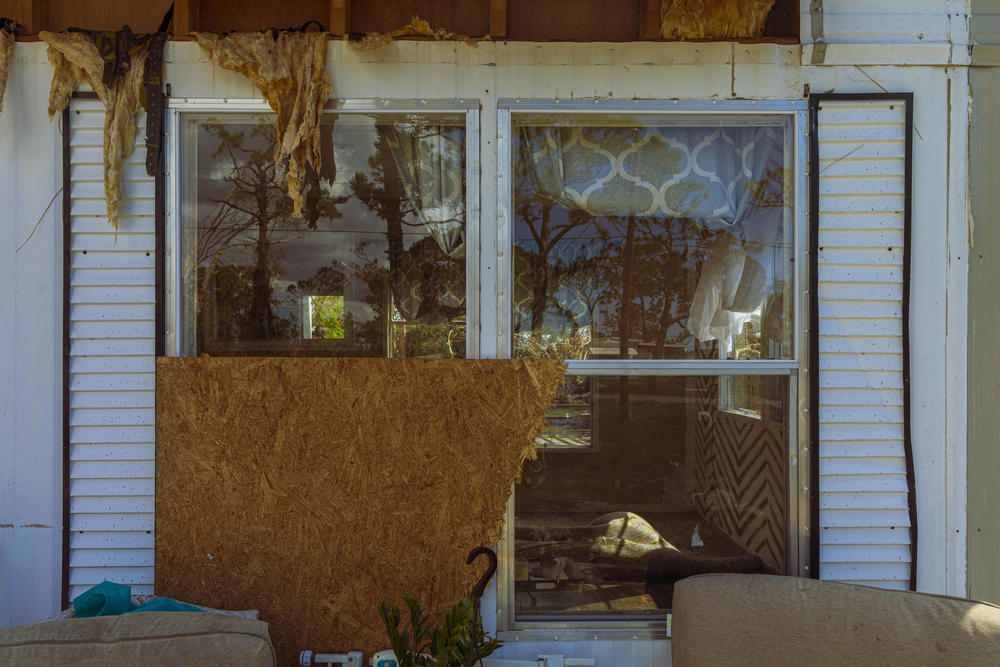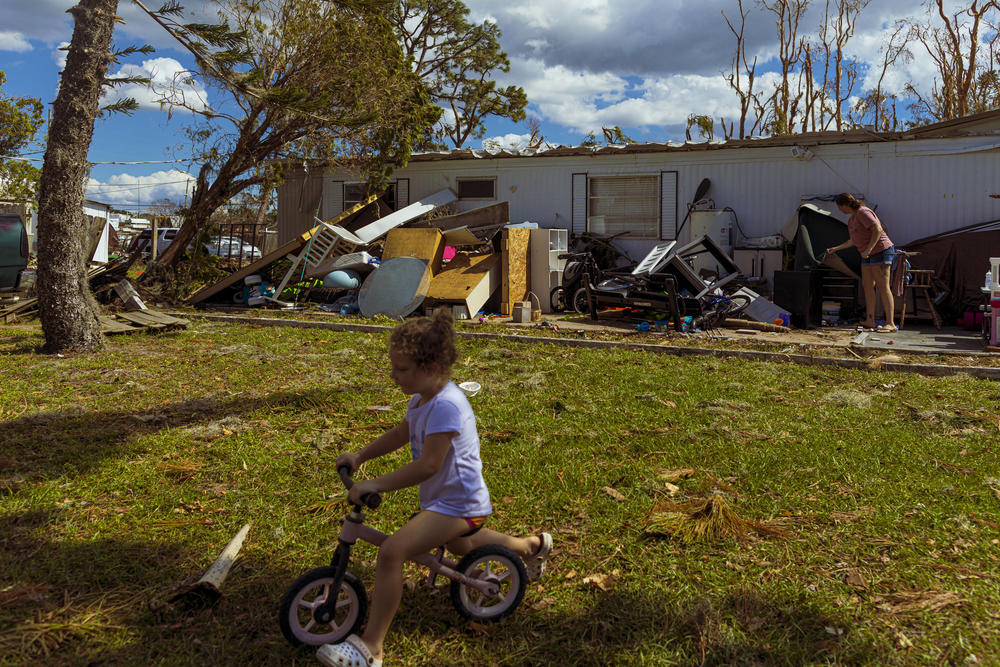Section Branding
Header Content
More than a week after Hurricane Ian, the shock of what's ahead settles in for people
Primary Content
LITTLE GASPARILLA ISLAND, Fla. — John Day and his 17-year-old son Jake loaded up their Carolina Skiff this week with a case of water, and other essentials at a marina near Englewood, Fla., to make the short boat trip to their home in Little Gasparilla, a two-and-a-half mile barrier island in the Gulf of Mexico.
They're just starting to assess Hurricane Ian's impact more than week after the storm made landfall south of here.
"This is the biggest storm I've ever seen," says John Day. "Very sad."
Little Gasparilla Island has only ever been accessible by boat. Ian dealt a severe blow. You can see the destruction as the boat eases up to the dock — hundreds of downed trees, brown vegetation, power lines on the ground, and pieces of metal roofing strewn all about.
"I think it's going to be years of recovery," says Day.
Jake echoes his dad's view of what's ahead of them both here and in other hard hit communities in Southwest Florida.
"It's a lot," he says. "It's just a lot of work."
Jake is a senior in high school but his classes have been postponed because his school is being used as a shelter for people displaced by the storm. So for now he's helping his dad clear debris and try to salvage what they can from their two-story home on Little Gasparilla.
Residents are in "survival mode"
Power crews are working on the island, but there's still no electricity. Just about all of the 500 or so houses on the island suffered serious damage. Some structures were completely knocked off their pilings.
"Right now, it's just pure survival mode," says John Day.
Day climbs the front stairs and is met by disarray. A deck railing is gone, the house's siding is stripped from the north side of the building, and one wall is completely detached.
"There's a piece of my house over there in that neighbor's yard," he says.
Inside, there's water damage. Black rings are forming around the light fixtures, and the drywall is soaked in one corner where the roof may have lifted.
"This is the worst," he says, walking to the back of the house. "I don't know what kind of mold it is, but it looks like black mold and it's covering the entire bathroom ceiling."
Recovery is a challenge
John Day, an IT consultant and father to three teenage boys, built his house on Little Gasparilla Island in 2004. It survived Category 4 Hurricane Charley that year but Day says he wasn't prepared for what Ian wrought.
"It's been mentally tough actually," he says. "I've never been challenged like this."
Back on the mainland in Charlotte County, recovery from Hurricane Ian is also proving to be a challenge. Huge boat storage warehouses are crunched, blue tarps cover leaky roofs, and business owners are taking stock of what's left.
"It's pretty much a total loss right now," says Ryan Wall, the owner of Ricaltini's restaurant and bar in Englewood. "I ended up having to get rid of all my food, my freezer, my coolers. All those things are just pretty much gone."
The outdoor patio is wrecked, littered with big screen TVs torn from their mounts, and mangled metal awnings.
"It [Hurricane Ian] just took that whole structure and ripped it off," he said, pointing to ruined equipment torn from the rooftop. "Those are my hood vents for the kitchen. Those are all gone."
Total nightmare
Wall lives in an apartment behind the restaurant. It got water damage but is livable and he's letting his his parents stay there for now. Their home was destroyed in the hurricane after the roof collapsed and it flooded. He has a harrowing story of how he wasn't able to rescue them until the waters receded two days after the storm.
"I mean, this is a total nightmare," Wall says.
At the restaurant, he hooks up a generator to help with the cleanup. He also wants to access his payroll to make sure his employees don't miss a check during these trying times. The task ahead is daunting, he says, but he hopes to be back open by December.
"It's just a matter of getting blue tarps up," Wall says. "And slowly put it back together."
For some families displaced by Hurricane Ian, putting it back together feels out of reach.
In a neighborhood behind the restaurant, Brianna Eisemann is pulling stinky drenched carpet from her mobile home as her 3-year old daughter, Keiyra Grace, plays in the front yard.
The matted foam rubber padding tears off in strips and bits in Eisemann's bare hands.
"It's still soaking wet," she says. "It smells horrible in here. It's bad. It's gross."
She's come up with a method to cope with the nasty task.
"Kind of just to hold your breath. Go in, come back out," she laughs, half-disgusted by the ongoing effort.
The storm knocked out windows and ripped off the screened-in front porch, what's left of it blown into the backyard.
"Our front door won't shut," Eisemann says.
The damage from the storm undermined the roof. Her home is not livable.
A struggle to recover
Eisemann says Keiyra Grace doesn't quite understand why they can't stay in the only home she's known. And she is very aware of the storm's impact.
"Allsa sees fall down," the little girl says.
Her mother understands.
"All the trees fell down," Eisemann echoes. "Yeah, all the trees fell down. They did. Yep."
For now, the 25-year-old mother of two lives in a temporary rental home owned by a family friend. But she's unsure what the future holds. Her partner is a mechanic, and they tend to get by paycheck to paycheck.
"I just think that it's harder for us to put our lives back on track, because we don't have the stability that a lot of people do," Eisemann says. "You can't just pick up and go find somewhere to call your residence or your home when you don't have the luxury to do that."
Copyright 2022 NPR. To see more, visit https://www.npr.org.
